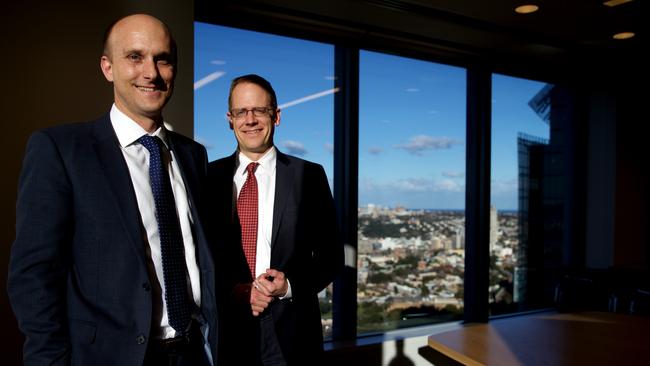
The central bank now expects this year’s growth to be 2.25 per cent rather than the 2.75 pencilled in back in November.
The Australian dollar fell 15 points to US67.1c on the news, while the benchmark S&P/ASX 200 share index extended its intraday fall to be down 0.5 per cent at 7015.
How can this be?
“Our central forecast is for the Australian economy to expand by 2.75 per cent over 2020 and 3 per cent the following year,” Dr Lowe said in his major speech on Wednesday, in seeming defiance of the bushfires and coronavirus crisis.
They are the same numbers that appeared in the November.
Goldman Sachs chief economist for Australia Andrew Boak, however, thought everyone was getting too excited.
Lowe, he noted, was talking about “year-ended”, not “year average”, Australian GDP growth
As English students — and Boak — understand, prepositions in phrasal verbs are critical: cheering on is very different from cheering up.
And so it is with economic growth.
Year-ended, or growth “over” a period, implies percentage changes between economic output in one three-month period compared with the same three-month period of the previous year, which ignores whatever happened in between.
Year-average, or growth “in” a year, by contrast is the sum of four consecutive quarters of economic activity over the previous four consecutive quarters.
If the bushfires and coronavirus hit activity hard this first quarter of 2020, Boak reasoned, “year-ended” growth wouldn’t change.
In fact, if the Christmas quarter shrank too, that would make the “year ended” growth forecast for 2020 even bigger, despite all the damage of the fires.
Boak therefore pencilled in a “year average” growth forecast as low as 2.25 per cent — and he was right.
“While we think it is somewhat unusual for the governor not to have highlighted these downgrades more explicitly (in his speech), it suggests that the RBA is likely focused on ‘looking through’ near-term growth disruptions in early 2020, which will weigh on the year-average growth rate,” he said this week.
What actually happens this year is another thing entirely.
Last year, the RBA’s statistical forecasting model, known as MARTIN, forecast 3 per cent growth for 2019 when 2 per cent is now far more likely.
On that record, it’s more likely we’ll be cheering the RBA up, rather than on, once this year’s actual growth figure emerges early next year.




Economists aren’t renowned for their forecasts but one at least correctly anticipated the surprise downgrade contained the RBA’s latest economic update, released on Friday.